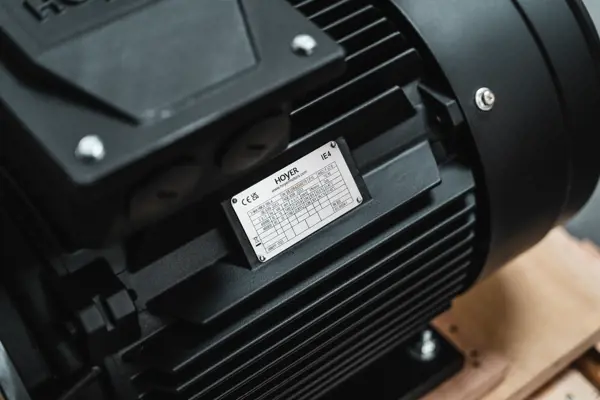
From July 2023, the EU will be tightening the requirements for the energy efficiency of electric motors
The final phase of the EU ecodesign regulations, which impose stricter requirements on the energy efficiency of electric motors, comes into force on 1 July 2023. This means that motors between 75 kW and 200 kW sold in the EU must achieve an energy efficiency level equivalent to IE4.
The implementation of Commission Regulation (EU) 2019/1781 laying down ecodesign requirements for electric motors and variable speed drives is entering the final phase.
The updated rules for the energy efficiency of electric motors come into force on 1 July 2023 and, according to the EU’s own calculations, will result in annual energy savings of more than 100 TWh by 2030. This corresponds to the total energy production of the Netherlands. This efficiency improvement means a potential reduction in CO2 emissions of 40 million tonnes per year.
As of 1 July 2023, all electric motors with a power output between 75 kW and 200 kW must have an International Energy Class (IE) equivalent to at least IE4. This will affect a wide range of applications that currently have an IE3 motor. “We will see a natural phasing out of the IE3 motors that are now subject to the IE4 requirements. But the cut-off date only applies to motors produced after 1 July. This means that customers can still have IE3 motors delivered, for as long as stocks last at Hoyer,” says Rune Svendsen, Segment Manager – Industry at Hoyer.
In addition to the IE4 requirement, Ex eb motors from 0.12 kW to 1000 kW and single-phase motors from 0.12 kW and upwards must as a minimum meet the requirements for IE2
Get ready for the new requirements
Buyers of electric motors, especially OEM manufacturers, can prepare for the upcoming requirements in several ways:
Get an overview of your products and design
Take stock of which products contain motors that are subject to the new regulations. Do you need to update the design, drawings and data sheets? Prioritise based on the best-selling products and how important a change to the motor will be.
Engage with customers and align expectations
Some customers will probably use the new requirements as an opportunity to make general upward adjustments to energy efficiency, even beyond the forthcoming minimum requirements. Conversely, others may prefer to limit the scope of design modifications as much as possible. Make sure you engage with customers as soon as possible, so that you can adjust framework agreements and plan purchases of motors.
Integrate the Ecodesign requirements into new and existing product designs
Identify instances where it is relevant to replace the motor with a more energy-efficient variant. Be aware that an IE4 motor has completely different characteristics than an IE3 motor. Although there is typically not much difference in how much space the motor requires, the IE4 motor can have other characteristics, such as starting current, starting torque, full load current, etc. It may be necessary to adapt connected equipment such as distribution boards and VFDs.
Emphasise total cost of ownership
IE4 motors are more expensive than motors with lower energy efficiency, which can affect fixed price agreements. In this case, it may be an advantage to place greater emphasis on the total cost over the entire lifetime of the product. Due to the lower energy consumption, an application with an IE4 motor will pay back a higher initial purchase price relatively quickly.
Add VFD equipment
In addition to the motor’s energy-saving properties, it is also possible to add VFD equipment for speed regulation and sensors for motor monitoring. This will optimise the energy efficiency of the applications.
Ask Hoyer for advice
Contact us if you are in any doubt as to how the new Ecodesign requirements will affect your product design, framework agreements, inventory needs or similar. We have a full overview of the new rules and will be able to advise you based on your specific needs.
The rules from 1 July 2023
The new regulation applies to induction motors up to 1000 V and 50 Hz, 60 Hz and 50/60 Hz for continuous operation via the mains.
The requirements for energy efficiency are:
IE4 requirements
Three-phase asynchronous motors with 2–6 poles and power output between 75 kW and 200 kW.
Does not apply to brake motors, Ex eb motors with increased safety and certain explosion-protected motors.
IE3 requirements
Three-phase asynchronous motors with 2–8 poles and power output between 0.75 kW and 1000 kW, except for motors subject to the IE4 requirement.
IE2 requirements
Three-phase asynchronous motors with power output between 0.12 kW and 0.75 kW. Ex eb motors with increased safety from 0.12 kW to 1000 kW. Single-phase motors from 0.12 kW to 1000 kW
It is important to note that the regulation also contains other exemptions and special requirements, depending on the use of the motor and environmental conditions.
